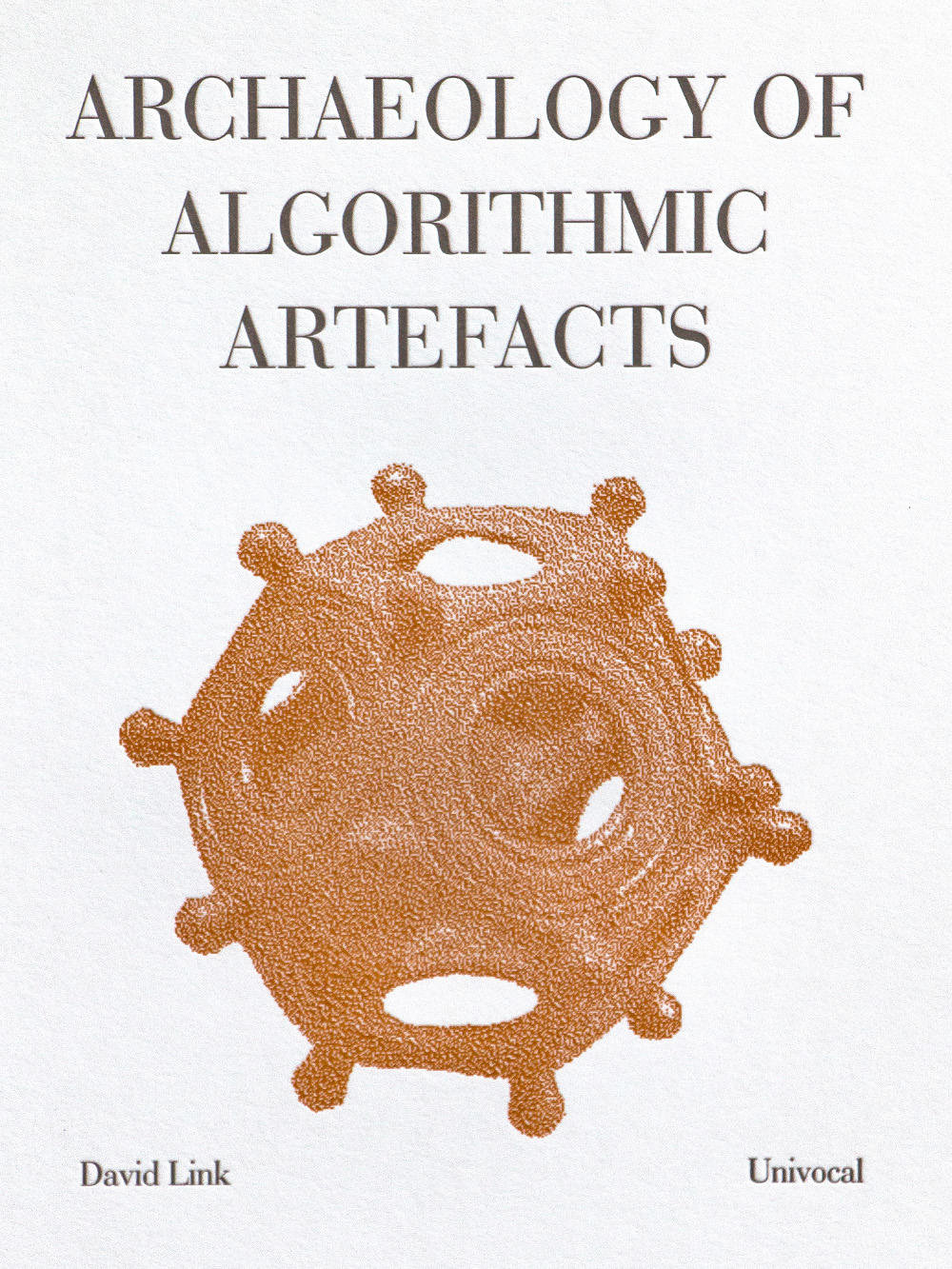Timothy Druckrey (ed.): Ars Electronica: Facing the Future: A Survey of Two Decades (1999)
Filed under book | Tags: · art, computer art, computing, electronic art, internet, media, media art, technology, theory, video art, virtual reality, web

“For the past two decades the Austrian-based Ars Electronica, Festival for Art, Technology, and Society has played a pivotal role in the development of electronic media. Linking artistic practice and critical theory, the annual festival and symposium bring together scientists, philosophers, sociologists, and artists in an ongoing discourse on the effects of digital media on creativity—and on culture itself.
Drawing on the resources of Ars Electronica’s publications and archives, this anthology collects the essential works that form the core of a contemporary art long dismissed as too technical or inaccessible. The book includes a critical introduction, full bibliography, and texts and artworks from the key figures in the field.
Among the many contributors are Robert Adrian, Roy Ascott, Jean Baudrillard, Heidi Grundmann, Donna Haraway, Kathy Huffman, Friedrich Kittler, Knowbotic Research, Myron Kruger, Laurent Migonneau, Sadie Plant, Florian Rötzer, Paul Sermon, Carl Sims, Christa Sommerer, Woody Vasulka, Paul Virilio, Peter Weibel, and Gene Youngblood.”
Publisher MIT Press, 1999
Electronic Culture: History, Theory, and Practice series, 1
ISBN 0262041766, 9780262041768
449 pages
via Ars Electronica
Reviews: Beryl Graham (Convergence, 2000), Rhizome (2000), Stephen Wilson (Leonardo, 2001), Yvonne Spielmann (Leonardo, 2001), Matthew Griffin (PAJ, 2002).
Comment (0)David Link: Archaeology of Algorithmic Artefacts (2016)
Filed under book | Tags: · algorithm, apparatus, computing, history of computing, machine, mathematics, media archeology, theory

“Unearthing the cumulus of transient technologies that underlie the fabric of contemporary society
As historical processes increasingly become steeped in technology, it becomes more and more necessary for a discipline to emerge that is capable of comprehending these materialities beyond their shelf life to better understand the fields they inundate such as science, art, and warfare. This effort is further compromised by the inherent complexity and complete arbitrariness of technical languages – especially when they are algorithmic – along with the rapid pace in which they become obsolete, unintelligible, or simply forgotten. The Turing Machine plays a central role in the Archaeology of Algorithmic Artefacts, wherein the gradual developments of the individual components encompassed by this complex technology are placed within the context of engineering sciences and the history of inventions. This genealogy also traces the origin of the computer in disciplines such as mathematics, meta-mathematics, combinatorics, cryptology, philosophy, and physics. The investigations reveal that the history of apparatuses that process signs is in no way limited, as one might think, to the second half of the 20th century, rather it is possible that they existed at all times and in all cultures.”
Publisher Univocal Publishing, Minneapolis, 2016
ISBN 9781937561048, 1937561046
207 pages
Review: Lisa Gitelman (Computational Culture, 2017).
PDF (18 MB)
Comments (3)Pamela McCorduck: Machines Who Think: A Personal Inquiry into the History and Prospects of Artificial Intelligence, 2nd ed. (1979/2004)
Filed under book | Tags: · artificial intelligence, computing, information, machine, robotics, robots, thinking

“Pamela McCorduck first went among the artificial intelligentsia when the field was fresh and new, and asked the scientists engaged in it what they were doing and why. She saw artificial intelligence as the scientific apotheosis of one of the most enduring, glorious, often amusing, and sometimes alarming, traditions of human culture: the endless fascination with artifacts that think. Machines Who Think was translated into many languages, became an international cult classic, and stayed in print for nearly twenty years.
Now, Machines Who Think is back, along with an extended addition that brings the field up to date in the last quarter century, including its scientific and its public faces. McCorduck shows how, from a slightly dubious fringe science, artificial intelligence has moved slowly (though not always steadily) to a central place in our everyday lives, and how it will be even more crucial as the World Wide Web moves into its next generation.”
First edition published by W. H. Freeman, 1979.
Publisher A.K. Peters, Natick, MA, 2004
ISBN 1568812051, 9781568812052
xxx+565 pages
Reviews: Philip Mirowski (AI Magazine, 2003), Richard Ennals (AI & Society, 2004), Mike Holderness (New Scientist, 2004).
PDF (4 MB)
Comment (0)
